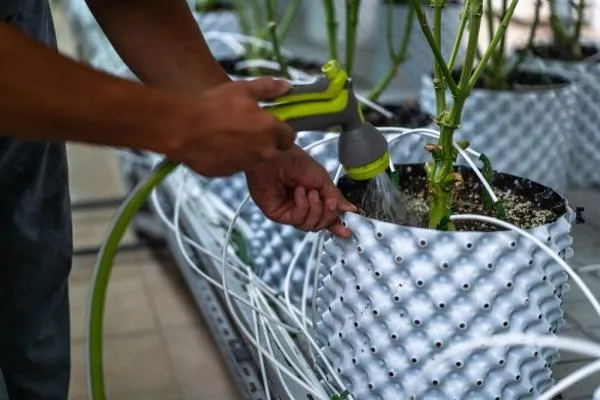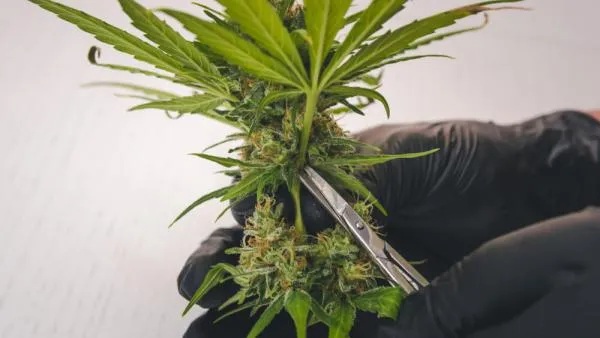Fusarium can be a sneaky and devastating issue for cannabis growers, especially if you’re new to cultivation. This guide is here to help you spot the signs, understand how it spreads, and take action to protect your plants. Whether you're growing for personal use or a commercial setup, understanding Fusarium is a game-changer.
What is Fusarium and Why is it a Problem for Cannabis Plants?
Fusarium is a fungus that’s a real headache for cannabis cultivators. It’s soil-borne, tough to get rid of, and can wipe out your plants before you know it. Let’s dig into why it’s such a big deal.
Overview of Fusarium wilt and its impact on cannabis
Fusarium wilt is caused by Fusarium oxysporum, a fungal pathogen that infiltrates your cannabis plants through the roots. Once inside, it clogs up the vascular system, preventing water and nutrients from traveling through the plant. The result? Wilting, stunted growth, and often a plant that’s too far gone to save. Yields can tank, and in severe cases, you might lose your entire crop.
Common cannabis pathogens and their effects
Fusarium isn’t the only pathogen out there gunning for your plants. You’ve got others like powdery mildew, Pythium, and Botrytis. Each has its own unique way of messing with your grow, but Fusarium stands out because of its resilience and ability to linger in the soil for years.
How Fusarium affects plant health and yields
When Fusarium strikes, it’s not just your current grow that’s at risk. The fungus can drastically reduce yields by killing off plants in their prime. Plus, it’s incredibly persistent. Even if you manage to save some of your crop, the fungus can stick around and rear its ugly head in future grows. It’s a vicious cycle you’ll want to break ASAP.
Recognizing the Signs of Fusarium Infection in Cannabis

Catching Fusarium early is your best bet for saving your plants. Let’s talk symptoms and how to tell if this fungus is the culprit.
Early symptoms of Fusarium wilt in cannabis plants
The first signs of Fusarium often look like your plants are thirsty or stressed:
- Yellowing leaves
- Wilting despite adequate watering
- Stunted growth
If you notice these, don’t wait—inspect the roots and stems to confirm what’s going on.
Identifying root rot and stem rot caused by Fusarium
Root rot is a big red flag. Fusarium-infected roots often turn brown or black and may feel mushy. Stem rot can also occur, where the base of the plant becomes discolored and soft. If you cut into a stem and see brown streaks inside, that’s a telltale sign of Fusarium.
- Roots turn brown or black
- Roots feel mushy to the touch
- Stem base becomes discolored and soft
- Brown streaks visible inside stems
- Plants show signs of wilting despite adequate watering
Differentiating Fusarium from other cannabis diseases
Here’s where things get tricky. Fusarium symptoms can mimic other issues like overwatering or nutrient deficiencies. To be sure, check for:
- Brown streaking inside stems
- Roots that are mushy or discolored
- Wilting that doesn’t improve with watering adjustments
If you’re still unsure, you might need to send a sample to a lab for confirmation.
How Fusarium Spreads in Cannabis Cultivation
Fusarium doesn’t just magically appear; it spreads. Knowing how it moves can help you stop it in its tracks.
Soil-borne fungus and its transmission
Fusarium lives in soil and spreads through infected dirt, water, and plant material. If you’re reusing soil or sharing tools between plants without sterilizing them, you’re basically giving Fusarium a free ride.
Role of environmental factors in Fusarium outbreaks
Hot and humid conditions are Fusarium’s best friend. Poor drainage, overcrowding, and lack of airflow make it even easier for the fungus to take hold. Keep your grow environment clean and controlled to minimize risk.
Preventing the spread of plant pathogens in grow rooms
To stop Fusarium in its tracks:
- Sterilize tools and pots regularly
- Avoid overwatering
- Use fresh, high-quality soil for each grow
- Quarantine new plants before introducing them to your grow room
Effective Methods to Treat Fusarium on Cannabis
Once Fusarium strikes, you need a game plan. Here’s how to fight back and minimize the damage.
Best practices for managing vascular wilt
Managing Fusarium starts with removing infected plants immediately. This helps prevent the fungus from spreading to healthy ones. Keep the affected plants isolated and focus on saving the rest of your crop.
Chemical and biological treatments for Fusarium
Chemical fungicides can be effective, but they’re often a last resort for cannabis growers who want to keep things natural. Biological treatments like Trichoderma and Bacillus subtilis are excellent options. These beneficial microbes fight Fusarium in the soil and improve plant resilience.
Steps to improve soil health and prevent reinfection
Healthy soil is your best defense against Fusarium. Here’s what I recommend:
- Add organic matter like compost to improve soil structure
- Use soil amendments like mycorrhizal fungi to boost plant health
- Rotate crops or use cover crops to break the Fusarium cycle
Preventing Fusarium Infection in Cannabis Plants
Prevention is always better than treatment. Let’s look at how to keep Fusarium out of your grow in the first place.
Importance of crop protection and disease management
Think of disease prevention as part of your regular routine. Keeping your grow space clean, monitoring plants daily, and addressing issues immediately can make a huge difference.
Using resistant cannabis strains for cultivation
Some cannabis strains are naturally more resistant to Fusarium. If you’ve had issues in the past, look for strains bred for disease resistance. This isn’t a foolproof solution, but it’s a step in the right direction.
Regular maintenance tips to keep plants healthy
Healthy plants are less likely to fall victim to Fusarium. Here’s what you should do:
- Water only when necessary and ensure proper drainage
- Prune plants to improve airflow
- Keep humidity levels in check
FAQ
What causes Fusarium in cannabis plants?
Fusarium is caused by a soil-borne fungus that thrives in warm, humid conditions. It spreads through contaminated soil, water, and tools, often entering plants via the roots.
How do I know if my cannabis plant has Fusarium?
You’ll notice symptoms like yellowing leaves, wilting, and stunted growth. Check the roots and stems for discoloration and mushiness to confirm.
Can Fusarium infection be cured completely?
Fusarium can’t be fully eradicated from infected soil, but you can manage it by removing affected plants, treating soil, and improving growing conditions.
What are the best fungicides for Fusarium on cannabis?
Biological fungicides like Trichoderma and Bacillus subtilis are effective and safer for cannabis. Chemical fungicides can also work but may leave residues.
How can I prevent Fusarium in future cannabis grows?
Prevent Fusarium by sterilizing tools, using fresh soil, avoiding overwatering, and maintaining a clean, well-ventilated grow environment.
Fusarium doesn’t have to be the end of your cannabis-growing journey. By understanding how it works, spotting the signs early, and taking steps to prevent and treat it, you’re setting yourself up for success. Stay vigilant, keep your grow space clean, and don’t be afraid to experiment with resistant strains or biological treatments. You’ve got this!










